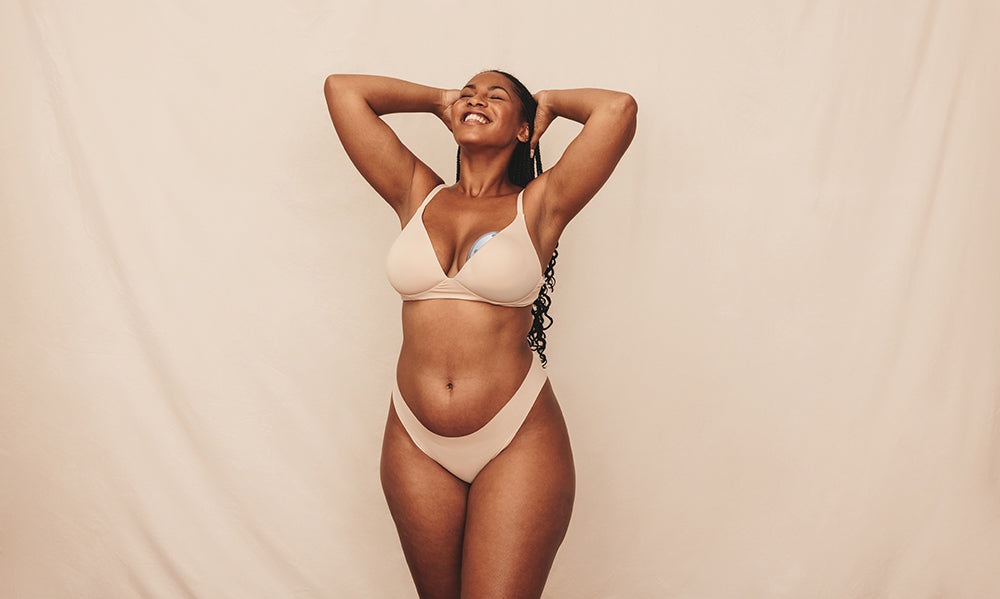Different Breastfeeding Positions
Breastfeeding is a natural process and can often be seen as ‘easy’, but it’s not often that simple. It is not a secret that there are many different feeding positions from cross cradle to rugby to koala hold, it can sound rather complex however let’s talk about the basics of latching and attachment before things get too complicated.
I am not the biggest fan of making strict rules about positions because in the end of the day what matters to me is the concept of comfort and efficiency.
I want you and baby to be comfortable and therefore we should always aim for a good effective and efficient latch, so you can experiment until you find one that works best for you.
Most Common Breastfeeding Positions
Cradle Hold
This is the most common breastfeeding position. To do this, sit up straight in a comfortable chair and bring your baby across your body so that they are tummy to tummy with you. Support your baby's head and neck with your arm on the same side as the breast you are feeding with. Use your other hand to support your breast from the underside.

Cross-Cradle Hold
This position is similar to the cradle hold breastfeeding position, but your baby is positioned on the opposite side of your body. To do this, bring your baby across your body so that they are facing you, but their head is resting in the crook of your other arm. Support their back with your hand on the same side as the breast you are feeding with.

Rugby Hold
Rugby Hold breastfeeding position is a good option if you have large breasts or if you have had a C-section. To do this, position a pillow to your side whilst sitting in a chair. Bring your baby to the side, with their hips aligned with yours. Use the back of your arm to support the baby's neck and the other hand to support your breast from the underside.

Side-Lying Position
The side-lying breastfeeding position is a great option for night feedings or if you are tired. To do this, lie on your side with your baby facing you. Bring your baby's head to your breast and support their back with your arm. You can use a pillow for added support to your back or your arm.

Koala Hold
Also known as the upright position, the Koala Hold breastfeeding position is a good option for premature babies or babies with tongue-tie also babies that struggle with managing an overactive let down, have digestive issues, reflux, GERD, or struggle with an oversupply. This position is also great to master nursing in a baby carrier and sling
Sit up straight in a comfortable chair and bring your baby to your chest in an upright position. Support your baby's head and neck with your hand on the same side as the breast you are feeding with. Use your other arm to support your breast from the underside.

Lying Down Breastfeeding
This laid down nursing also referred to as biological nursing and is one of the most beneficial breastfeeding position that can help improve a better and deeper latch, help with latching issues, it can also help improve a forceful and overactive let down. It can help with abdominal issues and is great after a belly birth.
Keeping in a slightly reclined position (not lying straight back), place your baby on your front so their tummy is on your tummy, and gently guide to your nipple. For extra support, you can prop pillows behind your shoulders and neck. If it is still a bit uncomfortable, try positioning your baby to lie ever so slightly on its side.

In addition to these positions, there are many other variations that you can try. The most important thing is to find a position that is comfortable for both you and your baby.
How Breast Pumps Can Help
Breast pumps can be a helpful tool for breastfeeding mothers. They can be used to express milk for feedings when you are away from your baby, or to supplement your baby's feedings. Breast pumps can also be used to help relieve engorgement or to build up your milk supply.
There are many different types of breast pumps available, so you can choose one that is right for you. At Pippeta we offer a range of manual and electric pumps to suit your needs, as well as accessories such as nipple cups and milk storage necessities. Our pumps are discreet so are perfect to use when out on your busy days or even if you are just relaxing at home.
If you are considering using a breast pump, our lovely lactation consultant can help you choose the right pump for your needs and help with how to use it.















Leave a comment
This site is protected by hCaptcha and the hCaptcha Privacy Policy and Terms of Service apply.